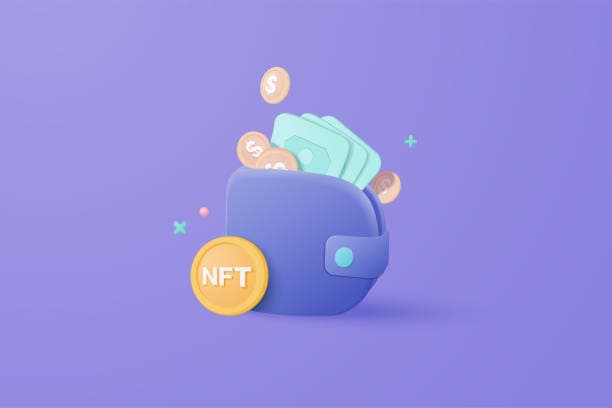What are the main risks of Bitcoin trading? Risk Management Best Practices
As the Bitcoin market matures, more and more people are getting involved in this market of opportunity and risk. The volatility and risks of Bitcoin trading cannot be ignored. In this article, we'll take a closer look at the main risks of Bitcoin trading and how to effectively manage them to protect your capital and increase your chances of trading success. Whether you're a novice or experienced trader, understanding risk management best practices can help you stay afloat in this fast-changing market.

Key Risks of Bitcoin Trading
The risks associated with Bitcoin trading can be categorized into several levels, with one of the most significant risks being its extremely high price volatility. The price of Bitcoin is subject to multiple factors, including global market sentiment, policy changes, and technological advances, and can fluctuate by as much as tens of percentage points. This means that investors can face significant losses or profits in a matter of hours or days.
The Bitcoin market is still relatively immature and the risk of market manipulation exists. For example, some large investment organizations or market manipulators can intervene in the price through block trading, which poses a potential risk to retail traders. The decentralized nature of Bitcoin makes trading unregulated, which could lead to an increase in fraudulent activity and even the risk of exchange failure or theft of funds.
Finally, the technical risks of Bitcoin trading cannot be ignored. Whether you use an insecure trading platform or manage your private key with poor security, you may lose your funds. Therefore, an understanding of Bitcoin trading and risk assessment are essential skills that every investor must possess.
Basic Risk Management Strategies
With so many risks, adopting an effective risk management strategy is of paramount importance. Diversification is the foundation of risk management. Instead of investing all of your capital in a single trading pair, diversifying into different cryptocurrencies or other assets can effectively reduce the risk associated with fluctuations in the price of a single asset.
Setting stop-loss and take-profit is an effective means of controlling risk. Stop-losses help you to close your positions automatically when the market fluctuates, preventing you from losing too much money, while take-profits lock in gains when your target is reached, preventing you from missing out on profits due to changes in market sentiment. Most exchanges, including Euronext, offer Stop Loss and Take Profit, which is especially important for new traders.
Regularly reviewing and adjusting your portfolio is another key risk management measure. As market conditions change, certain cryptocurrencies may no longer be attractive and other potential stocks may emerge. Staying flexible and regularly adjusting your investment strategy can help you better cope with market risks.
How to effectively reduce market risk
In the cryptocurrency market, the volatility of market sentiment is a major challenge for traders. Sentiment-driven markets often cause sharp price swings, which can be extremely risky for unprepared traders. To minimize market risk, it is important to remain calm and avoid emotional trading. Do not overreact to short-term fluctuations, stick to your trading plan and make rational judgments based on technical analysis and market data.
The acquisition and analysis of market information can also effectively reduce risk. For example, through technical analysis, traders can make predictions on the price trend of Bitcoin and deploy entry or exit strategies in advance. Understanding macroeconomics, policy changes, and even news on social media can help predict market direction and prepare for risks in advance.

For long-term investors, adopting a holding strategy (HODL) is also an effective way to minimize the impact of market volatility. Instead of relying on short-term market fluctuations, this strategy focuses on the long-term value growth of Bitcoin. Although this involves short-term price fluctuations, it reduces the risk of frequent manipulation if you stick to your long-term goal.
Exchange Risks and Selection Recommendations
Choosing a secure and trustworthy exchange is crucial for Bitcoin traders. There are many exchanges in the market and not all of them are secure and stable enough. Some exchanges may have technical loopholes or may not be able to effectively protect users' funds in the event of a hacking attack, so it is important to choose a well-known exchange with good user reviews and capital strength.
Take Euronext, for example, which has advanced encryption technology and strong security measures, and has performed well in terms of trading volume and user trust. Understanding the platform's fee structure and rebate program can also help you reduce trading costs and realize better profits.
Apart from choosing a reliable exchange, you need to pay attention to the security settings of your personal account. Enabling double authentication (2FA), changing passwords regularly, and keeping your device secure are all measures that can effectively prevent account theft.
How to respond to policy risks and regulatory changes
The legality of Bitcoin and other cryptocurrencies remains uncertain globally, with many countries' regulatory policies on cryptocurrencies either incomplete or in flux. Policy risk is a major challenge for cryptocurrency investors. For example, if a country suddenly announces a ban or high tax on Bitcoin trading, this could have a significant impact on the market.
To minimize the impact of policy risk, investors need to keep an eye on national policy moves towards Bitcoin and cryptocurrencies. Diversification can be an effective way to minimize policy risk in a single country or market. For example, if you are concerned that the Taiwan government may tighten its regulation of cryptocurrencies, consider allocating a portion of your capital to other countries or markets with less stringent policies.
Frequently Asked Questions Q&A
1. How do I choose the best Bitcoin trading platform for me?
When choosing a trading platform, you should first consider the security and reputation of the platform. Choose a platform with good ratings, strong capitalization and perfect security measures, such as Ouyi. It is also important to understand the platform's trading fee structure and rebate program, which can help you save trading costs.
2. The price of Bitcoin is too volatile, what should I do?
With the volatility of the Bitcoin price, it is important to have a sound risk management strategy. Using stop-loss and take-profit functions, setting trading targets and sticking to them can help you minimize losses and lock in gains in a volatile market.
3. Is it safe to hold Bitcoin for a long time?
As a decentralized asset, Bitcoin is technically safe to hold, provided you manage your private keys properly or use a trusted exchange to store Bitcoin. Market and policy risks remain, so long-term holding strategies need to be chosen carefully.














